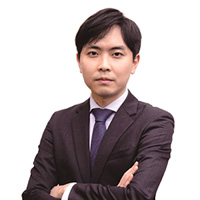
A sweeping overhaul of regulations and broader outreach are the focus of what the Cultural Heritage Administration intends to achieve this year, the state-run agency said Thursday.
At an annual briefing to update the public about its latest priorities, CHA chief Choi Eung-chon underscored the new goal of allowing Koreans to enjoy the benefits of the work the agency does.
“That’s our new role and value,” Choi said, describing the plan to rename the agency with the phrase “national heritage,” instead of “cultural heritage,” reflecting the determination to put the interests of ordinary Koreans front and center. The plan for the renaming is scheduled to go in effect on May 17.
Starting this year, builders will receive more government funds for the mandatory process that checks for important antiquities buried underground where construction takes place. Those setting up public facilities like sports centers, warehouses and factories have complained about such prescreening costs.
Residents that need to obtain agency approval for construction because they live near historic sites requiring extra protections will also receive more funds to build what they want -- as long as doing so does not put cultural heritage at risk.
“Up until now, requests to build something near those areas have all been turned down. Almost no exceptions. But that’s changing,” a senior CHA official said of the deregulation.
Additionally, dealers handling art will see more discretion over the volume of their exchanges with the outside world. The agency has decided to loosen rules mandating that all artworks at least 50 years old go up for government review before being taken out of the country.
Any artworks made in 1946 or afterward can be taken out without conditions, according to the new guidelines of the agency.
Meanwhile, the agency revealed steps to broaden outreach to local and international audiences alike. Nighttime tours will be available from as early as April this year at Changgyeonggung, one of the five royal palaces in Seoul from the Joseon era (1392-1910), making the program accessible at all the four agency-run palaces, including the main palace Gyeongbokgung.
More “mobile museums” around the country will be launched, as containers equipped to allow visitors to not only see artifacts but to feel what it is like touring cultural heritage sites will be stationed at more schools and other institutions from March to November.
The agency says it will be looking after laggards that need a hand in preservation efforts. Starting this year, the CHA will aid Cambodia’s efforts to preserve its signature temple complex Angkor Wat over the next three years.
The latest joint project marks the fifth partner with which Cambodia has sought such outside help -- following the US, Germany, Italy and Japan -- according to the agency, which described the joint project as part of official development assistance.
Last year, a foreign aid project concerning Egypt took off, with the agency-run university planning to establish a center within the Manial Palace Museum in Cairo that will keep digital replicas of key pieces of cultural heritage currently housed in six state-run institutions in the Egyptian capital.
“It’s about what we can contribute to and how we take advantage of knowhow learned there,” another senior CHA official said of foreign aid efforts, adding the agency will be in talks with countries in South America as well as Pacific Island nations over the matter in the coming years. A timeline has so far not been provided.








![[Today’s K-pop] Blackpink’s Jennie, Lisa invited to Coachella as solo acts](http://res.heraldm.com/phpwas/restmb_idxmake.php?idx=644&simg=/content/image/2024/11/21/20241121050099_0.jpg&u=20241121172748)









![[Today’s K-pop] Babymonster logs 100m views with ‘Drip’ music video](http://res.heraldm.com/phpwas/restmb_idxmake.php?idx=642&simg=/content/image/2024/11/22/20241122050051_0.jpg&u=20241122172213)